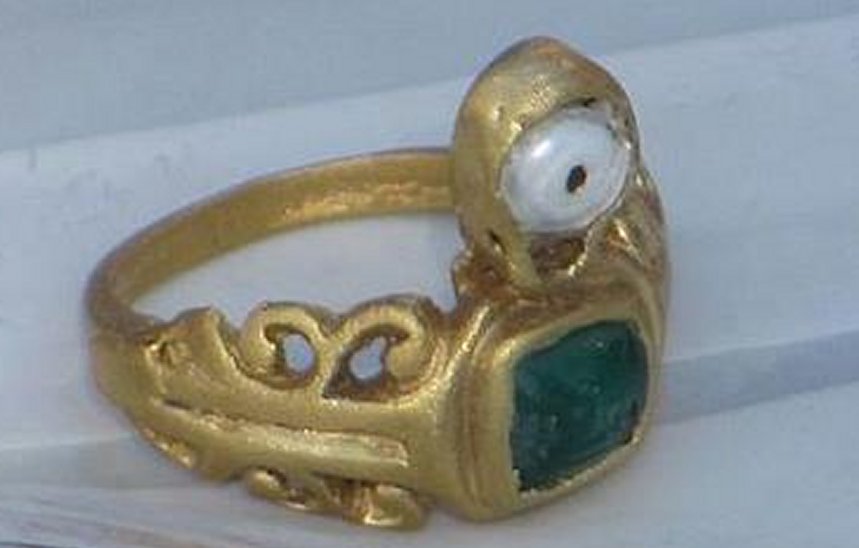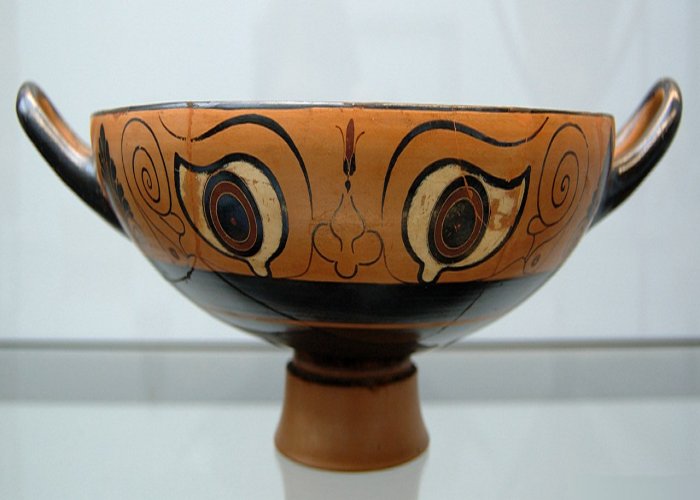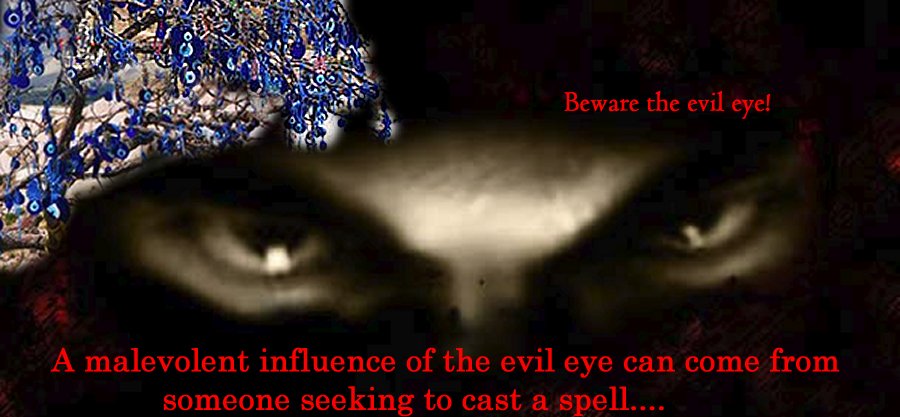Curse Of Evil Eye: Powerful Ancient Belief That Still Frightens People Around The World
A. Sutherland - AncientPages.com - There is an ancient, superstitious, and almost universal belief that certain people possess the supernatural power to cause disaster, illness, calamity, and even death.
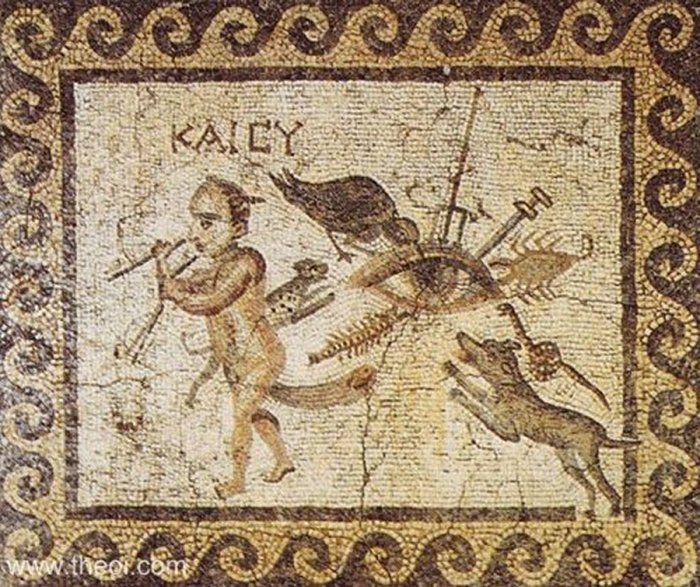 Mosaic from the House of the Evil Eye, Antioch, Syria. Credits: Archaeological Museum, Antakya
Mosaic from the House of the Evil Eye, Antioch, Syria. Credits: Archaeological Museum, Antakya
They can do it with a gaze or stare that gives an unpleasant emotion. The evil eye is widely feared in many parts of the world.
The oldest accounts of the evil eye went back to at least 3000 BC and were mentioned in the Sumerian, Babylonian, and Assyrian cuneiform texts. The ancient people of Mexico and Central America feared the power of the evil eye, as did the ancient Egyptians, Greeks, and Romans, who were particularly afraid of it.
Also, the Old and New Testaments of the Bible mention the evil eye in the celebrated "Sermon on the Mount," Jesus of Nazareth makes reference to the malignity of the Evil Eye:
Matthew 6:22-23 says,
"The light of the body is the eye: if therefore thine eye be single, thy whole body shall be full of light. But if thine eye be evil, thy whole body shall be full of darkness…"
A Ruby Eye Pendant from an ancient civilization in Mesopotamia was possibly used as an amulet to protect against evil eyes. Adilnor Collection. Image credit: Danieliness - CC BY-SA 3.0
Proverbs 28:22 says: "A man with an evil eye hastens after wealth and does not know that want will come upon him."
According to Western science, evil eye beliefs are not based on anything other than superstition.
The Evil Eye Was Feared In Many Ancient Cultures
Strangely, superstitions related to the evil eye are continuously prevalent in certain European countries, especially in the region of the Mediterranean, but also in Central America and Mexico. In North India, there is also a strong belief in the evil eye. The so-called "Buri Nazar" and a tattoo or an amulet are used to ward off the evil eye.
Different tribes have always feared the evil eye. Ancient beliefs say that medicine men, witch doctors, and sorcerers are among those who can cast evil eyes and bring bad luck. According to Native American beliefs, the so-called 'death-dealing evil eye power is possessed by tribal shamans.
Ring from the 3rd century, found in Croatia. The ring has a drawn rabbit that tastes like a flower, and that was seen as a symbol of happiness, while the "eye" represents protection against disasters and spells" Image credit: Croatian Times.
Also, other people can be the so-called 'iettatore' (or 'jettatore'); they naturally have an evil eye and bring bad luck. By looking at the target, they have an evil influence on another person, animal, object, or building.
It can be done deliberately by individuals seeking to cast a spell or unintentionally by individuals unaware of their evil power.
There are recorded cases of individuals suspected of being cursed with the evil eye from birth and did not even know about it. Two examples can be Pope Leo XIII and Pope Pius IX, who were said to possess the evil eye.
Kylix eye cup (530–520 BC), inscribed with Chalcidian text. It features an eye motif, to ward off the evil eye. Uploader: :Bibi Saint-Pol- Public Domain
According to ancient beliefs, one must be constantly guarded against the danger of someone's evil - though often - unintentional stare. This destructive influence of the evil eye may come from a stranger who, for example, admires one's children or a child; the evil eye can also dangerously affect an animal, a pregnant woman, and very happy and prosperous people.
Amulets That Ward Off The Evil Eye
There is a belief that beads, hand gestures, sayings, and amulets may help to ward off a dangerous gaze. These beads represent a powerful symbol of protection against the evil eye. In northern India and Pakistan, the rudraksha tree, or 'Eleacarpus ganitrus', grows, and the bead is actually its fruit, which shrivels to a hard, wood-like texture.
The ancient Romans used phallic amulets associated with their phallic God, Priapus ('Fascinus').
Hamsa, for example, is an ancient, powerful symbol often carried as an amulet to invoke God's hand or counteract the Evil Eye. From this, God's name originates the word 'fascination' and 'bewitchment.'
Interestingly, it is widely believed that men possess more evil eye power than women today.
Written by – A. Sutherland AncientPages.com Staff Writer
Updated on February 28, 2023
Copyright © AncientPages.com All rights reserved. This material may not be published, broadcast, rewritten or redistributed in whole or part without the express written permission of AncientPages.com
Expand for referencesReferences:
Dundes A. The Evil Eye: A Casebook
Elliot, John H. Beware the Evil Eye; The Evil Eye in the Bible and the Ancient World: Volume One
Bohak, Ancient Jewish Magic
A. Ross, Hypothesis: The Electrophysiological Basis of Evil Eye Belief
More From Ancient Pages
-
 Earliest Ochre Crayon Used By Our Ancestors 10,000 Years Ago Found In Yorkshire, Northern England
Archaeology | Jan 29, 2018
Earliest Ochre Crayon Used By Our Ancestors 10,000 Years Ago Found In Yorkshire, Northern England
Archaeology | Jan 29, 2018 -
 Urban Resiliency Lie Within Ancient Cities – New Study Suggests
Archaeology | Jul 25, 2023
Urban Resiliency Lie Within Ancient Cities – New Study Suggests
Archaeology | Jul 25, 2023 -
 4,000-Year-Old Village Mentioned In Ancient Texts Unearthed Near Sacred City Of Varanasi
Archaeology | Mar 13, 2020
4,000-Year-Old Village Mentioned In Ancient Texts Unearthed Near Sacred City Of Varanasi
Archaeology | Mar 13, 2020 -
 Why Did First Printed Books Scare Ancient Scholars In Europe?
Ancient History Facts | Sep 18, 2021
Why Did First Printed Books Scare Ancient Scholars In Europe?
Ancient History Facts | Sep 18, 2021 -
 Great research of Polish archaeologist working at rock art site in Kondoa, Tanzania
News | Aug 26, 2015
Great research of Polish archaeologist working at rock art site in Kondoa, Tanzania
News | Aug 26, 2015 -
 Researchers Confirm Clovis People Used Great Lakes Camp Annually About 13,000 Years Ago
Archaeology | Sep 12, 2024
Researchers Confirm Clovis People Used Great Lakes Camp Annually About 13,000 Years Ago
Archaeology | Sep 12, 2024 -
 120,000-Year-Old Human Footprints Discovered In Saudi Arabia
Archaeology | Sep 18, 2020
120,000-Year-Old Human Footprints Discovered In Saudi Arabia
Archaeology | Sep 18, 2020 -
 Great Wall Of India: Massive Structure That Surrounds Ancient Fort Of Kumbhalgarh
Featured Stories | Aug 31, 2015
Great Wall Of India: Massive Structure That Surrounds Ancient Fort Of Kumbhalgarh
Featured Stories | Aug 31, 2015 -
 Rare Stories Of Merlin And King Arthur Discovered In Medieval Manuscript Hidden In Plain Sight
Linguistic Discoveries | Apr 15, 2025
Rare Stories Of Merlin And King Arthur Discovered In Medieval Manuscript Hidden In Plain Sight
Linguistic Discoveries | Apr 15, 2025 -
 Unusual Power Of Seidr: Norse Shamans Used Magic To Alter Destiny And See The Future
Featured Stories | Oct 14, 2017
Unusual Power Of Seidr: Norse Shamans Used Magic To Alter Destiny And See The Future
Featured Stories | Oct 14, 2017 -
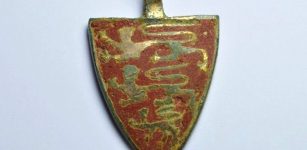 Priceless 800-Year-Old Treasure Featuring Three Golden Lions Unearthed
Archaeology | Aug 5, 2022
Priceless 800-Year-Old Treasure Featuring Three Golden Lions Unearthed
Archaeology | Aug 5, 2022 -
 Why Were Wampum Belts Important To Native Americans?
Featured Stories | May 10, 2018
Why Were Wampum Belts Important To Native Americans?
Featured Stories | May 10, 2018 -
 Tokoloshe: Demonic Creature That Feeds On Spiritual Energy Of Its Victims
Featured Stories | Sep 9, 2020
Tokoloshe: Demonic Creature That Feeds On Spiritual Energy Of Its Victims
Featured Stories | Sep 9, 2020 -
 Uncovering 16th Century Scottish Royal Dockyards Used By King James IV’s Navy
Archaeology | May 24, 2018
Uncovering 16th Century Scottish Royal Dockyards Used By King James IV’s Navy
Archaeology | May 24, 2018 -
 On This Day In History: British Forces Captured Gibraltar – On August 3, 1704
News | Aug 3, 2016
On This Day In History: British Forces Captured Gibraltar – On August 3, 1704
News | Aug 3, 2016 -
 Stone Homes Of Europe’s First Megalithic Builders Discovered
Archaeology | Feb 22, 2023
Stone Homes Of Europe’s First Megalithic Builders Discovered
Archaeology | Feb 22, 2023 -
 Sodré Astrolabe, Found On Portuguese Armada Shipwreck Is The Oldest In The World
Archaeology | Mar 19, 2019
Sodré Astrolabe, Found On Portuguese Armada Shipwreck Is The Oldest In The World
Archaeology | Mar 19, 2019 -
 Barrels With Unique Intact Cargo Found On The Osmundvraket (Osmond Wreck)
Archaeology | Jun 7, 2024
Barrels With Unique Intact Cargo Found On The Osmundvraket (Osmond Wreck)
Archaeology | Jun 7, 2024 -
 1,600-Year-Old Pendants Depicting Humans And Animals Excavated In Ancient Port-City Of Assos
Archaeology | Jan 21, 2020
1,600-Year-Old Pendants Depicting Humans And Animals Excavated In Ancient Port-City Of Assos
Archaeology | Jan 21, 2020 -
 Tombs Rich In Artifacts Discovered By Swedish Expedition In Cyprus
Archaeology | Jul 6, 2023
Tombs Rich In Artifacts Discovered By Swedish Expedition In Cyprus
Archaeology | Jul 6, 2023


